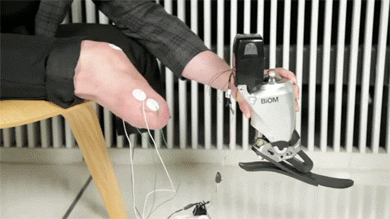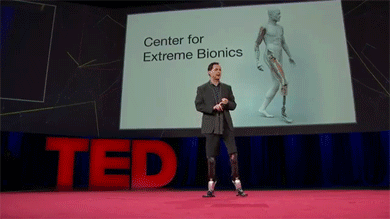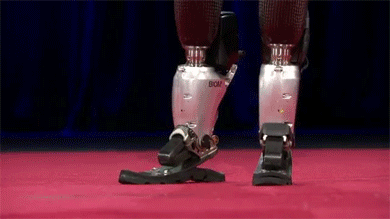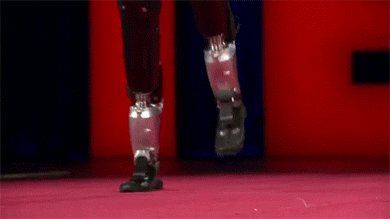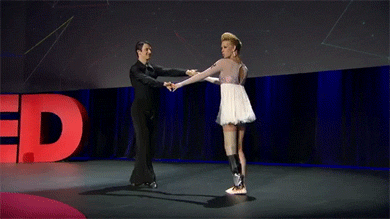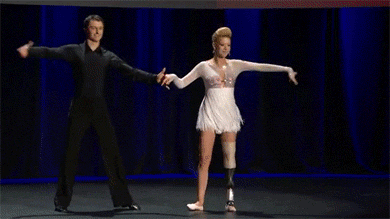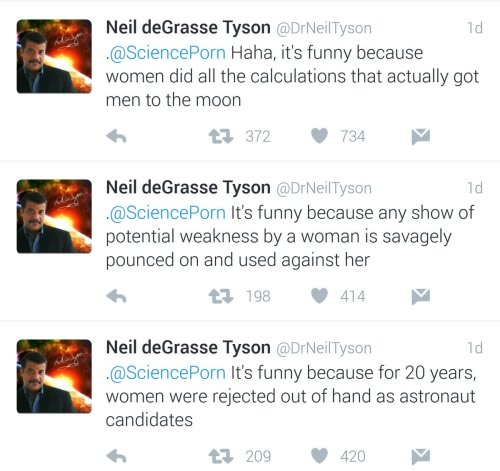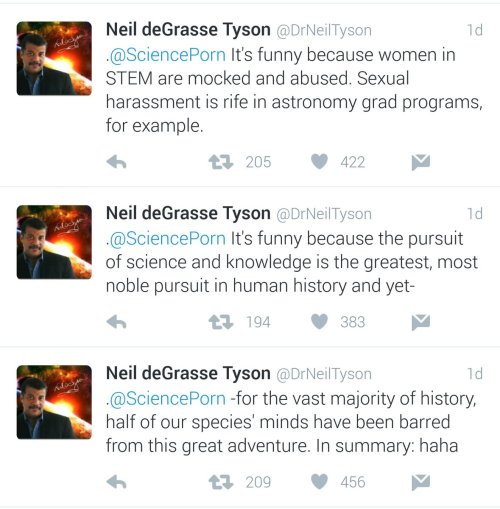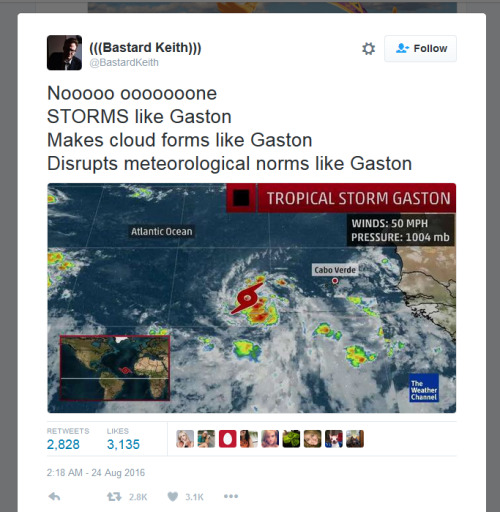Gaming, Science, History, Feminism, and all other manners of geekery. Also a lot of dance
243 posts
Latest Posts by stubborn-turtle-blog - Page 6
Massive shout-out to the one woman team
Sample Return Robot Challenge
It’s been a long, technical journey for the seven teams competing this week in Level 2 of our Sample Return Robot Challenge. Over the past five years, more than 50 teams have attempted the $1.5 million competition, which is looking to develop autonomous capabilities in robotics. Basically, we want robots that can think and act on their own, so they can travel to far off places – like Mars – and we can rely on them to work on their own when a time delay or unknown conditions could be factors.
This challenge has two levels, both requiring robots to navigate without human control and Earth-based tools (like GPS or magnetic compassing). The robot has to find samples, pick them up and deliver them to home base. Each of the final seven teams succeeded at Level 1, where they had to find one sample, during previous competition years. Now, they have a shot at the much more difficult Level 2, where they have a two-hour window to locate up to 10 samples of varying point values, but they don’t know where to look or what exactly they’re looking for.
Get to know the final seven, and be sure to cheer them on as we live-stream the competition all day Sept. 4 and 5.

West Virginia University Mountaineers Hailing from: Morgantown, West Virginia # of Team Members: 12
Behind the Name: In West Virginia, we call ourselves mountaineers. We like to explore unknown places and be inspired by nature.
Motivation: To challenge ourselves. Through this venture, we are also hoping to create research and career opportunities for everyone on the team.
Strategy: Keeping things simple. Through participating in SRR challenge during the last three years, we have gone a long way in streamlining our system.
Obstacles: One of the biggest challenges was finding and nurturing the talent of individual team members and coordinating the team in making real progress on time.
Prize Plans: We donated 50 percent of our 2015 Level 2 prize money to create an undergraduate “Robotics Achievement Fellowship” at WVU. The rest of the funding was allocated to support team member professional development, such as traveling to conferences. A similar model will be used if we win in 2016.
Extra Credit: We did an Easter egg hunt with our robot, Cataglyphis (named after a desert ant with extraordinary navigation capabilities), last year.

Survey Hailing from: Los Angeles, California # of Team Members: Jascha Little
Behind the Name: It’s short, simple, and what the robot spends a lot of its time doing.
Team History: We work together, and we all thought the challenge sounded like an excellent way to solve the problem of what to do with all our free time.
Motivation: We are all engineers and software developers that already work on robotics projects. Reading too much sci-fi when we were kids probably got us to this point.
Strategy: We are trying to solve the search-and-return problem primarily with computer vision. This is mostly to reduce cost. Our budget can’t handle high quality IMUs or LIDAR.
Prize Plans: Probably build more robots.
Extra Credit: Favorite pop culture robot is Bender (Futurama). Alcoholic robots are the best.

Alabama Astrobotics (The University of Alabama) Hailing from: Tuscaloosa, Alabama # of Team Members: 33
Behind the Name: “Alabama Astrobotics” was chosen to reflect our school affiliation and our mission to design robotics for various space applications.
Team History: Alabama Astrobotics has been involved with other NASA robotics competitions in the past. So, the team is accustomed to the competition environment.
Motivation: We are pleased to have advanced to Level 2 in our first year in the competition (the first team to do so), but we are also not satisfied with just advancing. Our goal is to try to solve Level 2.
Strategy: Our strategy is similar to that used in Level 1. Our Level 1 approach was chosen so that it would translate to Level 2 as well, thus requiring fewer customizations from Level 1 to Level 2.
Obstacles: As a university team, the biggest challenge was not having all our team members available to work on the robot during the time since Level 1 completed in June. Most of my team members have either graduated or have summer internships, which took them away from campus after Level 1. Thus, we didn’t have the manpower to address the additional Level 2 technical challenges.
Prize Plans: Any prize money would be donated to the University of Alabama College of Engineering.
Extra Credit: Alabama Astrobotics also competes in the annual NASA Robotic Mining Competition held at the Kennedy Space Center each May. We have been fortunate enough to win that competition three times in its seven year history, and we are the only team to win it more than once.

MAXed-Out Hailing From: Santa Clara, California # of Team Members: 4
Behind the Name: Several reasons: Team leader is Greg Maxwell, and his school nick name was Max. Our robot’s name is Max, which is one of the most common name for a dog, and it is a retriever. Our efforts on this has been too the max…. i.e. MAXed-Out. Our technology requirements have been pushed to their limits - Maxed-Out.
Team History: Greg Maxwell started a Meet-up “Silicon-Valley Robot Operating System” SV-ROS that was to help teach hobbyists how to use ROS on their robots. We needed a project to help implement and make real what we were teaching. This is the third contest we have participated in.
Motivation: There is still such a long way to go to make robots practical. Every little bit we can contribute makes them a little bit better and smarter. Strategy: Level 1 was a test, as a minimum viable product to prove the tech worked. For Level 2, we had to test and add obstacle avoidance to be able to cover the larger area with trees and slopes, plus add internal guidance to allow for Max to be out of the home base camera tracking system.
Obstacles: Lack of a cost effective robot platform that met all the requirements; we had to build our own. Also time and money. The two months (between Level 1 and 2) went really fast, and we had to abandon lots of cool ideas and focus on the basics.
Prize Plans: Not sure, but pay off the credit cards comes to mind. We might open-source the platform since it works pretty well. Or we will see if it works as expected. We may also take a break / vacation away from robots for a while.
Extra Credit: My nephew, Max Hieges, did our logo, based on the 1960-era Rat Fink sticker.

Mind & Iron Hailing From: Seattle, Washington # of Team Members: 5
Behind the Name: It was the original title for Isaac Asimov’s “I Robot,” and we thought it was a good combination of what a robot actually is – mechanical and brains.
Team History: Three of us were WPI undergrads and met at school; two of us did our master’s degrees at the University of Washington, where we met another member, and then another of us brought on a family member.
Motivation: We saw that there was an opportunity to compete in a challenge that seemed like there was a reasonable solution that we could tackle with a limited budget. We saw three years of competition and thought that we had some better ideas and a pretty good shot at it. Strategy: The samples and the terrain are much more complex in Level 2, and we have to be more careful about our navigation. We are using the same tools, just expanding their capability and scope.
Obstacles: The team being spread over three different time zones has been the biggest challenge. We are all doing this in our free time after work. The internet has been really handy to get things done.
Prize Plans: Probably invest in more robot stuff! And look for other cool projects we can work on, whether it’s another NASA challenge or other projects.
Extra Credit: We are hoping to collaborate with NASA on the professional side with surgical robots to exoskeletons. Challenge-related, our robot is mostly made of plywood – it is a composite fiber material that works well for fast development using cheap materials.

Sirius Hailing From: South Hadley, Massachusetts # of Team Members: 4
Team History: We are a family. Our kids are both robot builders who work for Boston Dynamics, and they have a lot of robot expertise. Both of our kids are robotics engineers, and my wife is intrinsically brilliant, so the combination of that makes for a good team.
Motivation: Because it’s a really hard challenge. It’s one thing to drive a robot with a remote control; it’s another to do the whole thing autonomously. If you make a single change in a robot, it could throw everything off. You have to think through every step for the robot. On a basic level, to learn more about robotics and to win the prize. Strategy: Very similar to Level 1. We approached Level 1 knowing Level 2 was there, so our strategy was no different.
Obstacles: It is very difficult to do object recognition under unpredictable conditions – sun, clouds, weather, sample location. The biggest challenge was trying to recognize known and unknown objects under such a wide variety of environmental possibilities. And the terrain is very different – you don’t know what you’re going to find out there.
Prize Plans: We haven’t really thought about it, but we will give some away, and we’ll invest the rest in our robotics company.
Extra Credit: The first robot we had was called Robo-Dad. Dan was training to be an astronaut in the 1990s, so we built a toy remote-controlled truck that Dan - in Texas - could control via the internet in the house. Robo-Dad had a camera that Dan could see the house with. It had two-way communication; it was a little before it’s time – the internet was very slow.

Team AL Hailing From: Ontario, Canada # of Team Members: 1
Team History: I was looking for competitions that were open, and my dad had followed the Centennial Challenges for a while, so he alerted me to this one. I was already doing rover projects, and it was appropriate and awesome and interesting. I felt like I could do it as a team of one.
Motivation: Difficult challenges. I’m definitely inspired seeing really cool robots that other people are building. New emerging tech really motives me to create new things.
Strategy: I showed up with another robot to Level 2. I built three, but ran with only two. It did make it more complicated, but the strategy was to send them to different areas and have them be able to communicate with each other. Everything physically was the same from Level 1. The idea is that they would all go out with different missions and I would maximize field coverage.
Obstacles: Time. More time would always be nice. Being able to make something like this happen under a timeline is really difficult. I feel like I accomplished a lot for a year. Also, manpower – being a team of 1, I have to do all of the paperwork and other related stuff, but also carry the hardware and do the programming. You have to multitask a lot.
Prize Plans: I’d like to start a robotics company, and be able to expand some of the things I’ve been working on associated with technology and maker education.
Extra Credit: My story is not linear. A lot of people are surprised to hear that my background is in molecular biology and research. I once lived in a tent in Madagascar for a few months to do a biodiversity study, and I have multiple publications from that side of my life. I am in a whole different place now.
The competition is one of many run by our Centennial Challenges program, which looks to the public – citizen inventors, academics, makers, artists, YOU – to help us advance technology and bring a different perspective to obstacles that gets us outside of our traditional solving community. See what else we’re working on here.
Make sure to follow us on Tumblr for your regular dose of space: http://nasa.tumblr.com











Residence in Woody Creek, Colorado
Perched at the rivers edge, this Pampiano Residence by Studio B consists of an addition to the existing house as well as a detached garage with a dwelling unit above. The new architecture reinterprets the existing house and marries the project as ‘a whole’ through its use of materials, patterns and massing.
Images and text via + via
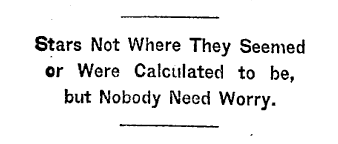
Let History Never Forget the Name Enterprise
Just as the captains of the fictional 24th century Starfleet blazed a trail among the stars, the space shuttle Enterprise helped pave the way for future space exploration.
Fifty years ago, Star Trek debuted with the USS Enterprise as the main space-faring vessel used in much of the Star Trek universe. As such, the vessel holds a treasured place in the hearts of Star Trek fans and is as much of a character in the show as Kirk and Spock. Over three different series and a total of 14 seasons on TV and 13 feature films, the iterations of Enterprise have captured the imaginations and provided inspiration for its fans across the globe.
This brief history of the shuttle tells the tale of humanity’s first reusable spacecraft. Space shuttles were first built in the late 1970s and were flown in space from 1981 to 2011. Their missions ranged from helping to build the International Space Station to repairing the Hubble Space Telescope.
It’s All In The Name

The first shuttle was originally to be named Constitution, celebrating the country’s bicentennial and was to be unveiled to the public on Constitution Day, Sept. 17, 1976. However, a massive letter-writing campaign by Star Trek fans prompted President Gerald Ford to suggest the change. In the above photo, we see the shuttle Enterprise rolled out in Palmdale, California, with cast members of Star Trek on Sept. 17, 1976.
To Boldly Go …

This circular red, white and blue emblem was the official insignia for the Space Shuttle Approach and Landing Test flights and became a model for future space shuttle mission patch designs, including placing the names of the crew on the patch . The four astronauts listed on the patch are:
Fred Haise., commander of the first crew
Charles Fullerton, pilot of the first crew
Joe Engle, commander of the second crew
Dick Truly, pilot of the second crew
First Impressions

In this image, Enterprise makes its first appearance mated to its boosters as it is slowly rolled to the huge Vehicle Assembly Building (VAB) at Kennedy Space Center. Although she never flew in space, shuttle Enterprise underwent a series of fit and function checks on the pad in preparation for the first launch of its sister craft, Columbia.
Not Meant To Be

Enterprise sits on Launch Complex 39 at Kennedy Space Center undergoing tests after completing its 3.5 mile journey from the VAB. Have you ever wondered why Enterprise never went into space? Converting Enterprise from a training vehicle to space-worthy one was too cost prohibitive, our engineers felt.
Engage

Commander Fred Haise and pilot Charles Fullerton are seen in the cockpit of Enterprise prior to the fifth and final Approach and Landing Test at Dryden Flight Research Center (Armstrong Flight Research Center). The tests were performed to learn about the landing characteristics of the shuttle.


It’s Been An Honor To Serve With You

The Enterprise’s two crews pose for a photo op at the Rockwell International Space Division’s Orbiter assembly facility at Palmdale, California. They are (left to right) Charles Fullerton, Fred Haise, Joe Engle and Dick Truly.
Fair Winds And Following Seas

On July 6, 2012, the Enterprise, atop a barge, passes the Statue of Liberty on its way to the Intrepid Sea, Air and Space Museum, where is now permanently on display.
Learn more about Star Trek and NASA.
Make sure to follow us on Tumblr for your regular dose of space: http://nasa.tumblr.com
Google translate does not concur, but it wouldn't surprise me
Giant panda’s scientific name was only given in 1870, by a French zoologist in Paris based on a dead speciment. It is ailuropoda melanoleuca – literally, “cat foot, black and white.”
More Than Just Drawings
Artist and graphic designer Mike Okuda may not be a household name, but you’re more familiar with his work than you know. Okuda’s artistic vision has left a mark here at NASA and on Star Trek. The series debuted 50 years ago in September 1966 and the distinctive lines and shapes of logos and ships that he created have etched their way into the minds of fans and inspired many.
Flight Ops

The Flight Operations patch has a lengthy history, the original version of which dates to the early 1970s. Having designed a version of the patch, Okuda had some insights about the evolution of the design.
“The original version of that emblem was designed around 1972 by Robert McCall and represented Mission Control. It later changed to Mission Operations. I did the 2004 version, incorporating the space station, and reflecting the long-term goals of returning to the Moon, then on to Mars and beyond. I later did a version intended to reflect the new generation of spacecraft that are succeeding the shuttle, and most recently the 2014 version reflecting the merger of Mission Operations with the Astronaut Office under the new banner Flight Operations.”
“The NASA logos and patches are an important part of NASA culture,” Okuda said. “They create a team identity and they focus pride on a mission.”

In July 2009, Okuda received the NASA Exceptional Public Service Medal, which is awarded to those who are not government employees, but have made exceptional contributions to NASA’s mission. Above, Okuda holds one of the mission patches he designed, this one for STS-125, the final servicing mission to the Hubble Space Telescope.
Orion

Among the other patches that Okuda has designed for us, it one for the Orion crew exploration vehicle. Orion is an integral of our Journey to Mars and is an advanced spacecraft that will take our astronauts deeper into the solar system than ever before.
Okuda’s vision of space can be seen in the Star Trek series through his futuristic set designs, a vision that came from his childhood fascination with the space program.
Learn more about Star Trek and NASA.
Make sure to follow us on Tumblr for your regular dose of space: http://nasa.tumblr.com









Casa Sperimentale’ Ruins
Architect: Giuseppe Perugini
Location/Year: Via Porto Azzurro, 57, 00054 Fregane RM (Rome) Italie / 1971
Pictures/Source: Oliver Astrologo + Google / designboom
The Gasoline Station is a proud partner of the Minuscule community network.
Artists + Bloggers + Sponsors = Stronger Together
NASA and Star Trek
Star Trek debuted in September 1966 and in its various incarnations, the series has been an inspiration to many, even some of us at NASA. The series allowed its fans to explore “strange new worlds” and to dream of what could be right in their living rooms. To celebrate the show’s 50th anniversary, we’ve collected some Trek-themed photos featuring Star Trek cast members and NASA astronauts.
Serious Business

The STS-54 crew of the space shuttle Endeavour in their official “gag” photo are costumed as the bridge crew of the Enterprise as depicted in the movie “Star Trek II: The Wrath of Khan.” The photo was taken on the Star Trek Adventure set of the Universal Studios California theme park in Los Angeles, California, while the crew was on a west coast training and public relations tour during the Summer of 1992. From left to right:
Greg Harbaugh (Mission Specialist/Engineering Officer)
Mario "Spock” Runco Jr. (Mission Specialist/1st Officer/Science Officer)
John Casper (Commander/Captain)
Susan Helms (Mission Specialist/Communications Officer)
Don McMonagle (Pilot/Navigation-Helm Officer)
“I have been, and always shall be, your friend”

Astronaut John Creighton shows the on board Graphical Retrieval Information Display (GRID) computer, which displays a likeness of Mr. Spock aboard STS-051G, June 18, 1985.
“A Keyboard… How Quaint”

Actor James Doohan (who played engineering genius Montgomery Scott in Star Trek) sits in the commanders seat of the Full Fuselage Trainer while astronaut Mario Runco explains the control panel during a tour of Johnson Space Center on Jan. 18, 1991.
“You Wanted Excitement, How’s Your Adrenaline?”

Actress Nichelle Nichols (Uhura in Star Trek) toured Johnson Space Center in Houston on March 4, 1977, while Apollo 12 lunar module pilot and Skylab II commander Alan Bean showed her what it felt like inside the Lower Body Negative Pressure Device and showed her how the Shuttle Procedures Simulator operated.


Nichols paid us another visit in 2012 and 2015 with the Space Traveling Museum.
Infinite Diversity, Infinite Combinations

European Space Agency astronaut Samantha Cristoforetti gave the Vulcan salute aboard the International Space Station shortly after the passing of Leonard Nimoy on Feb. 28, 2015. She commented on Tweeter: “ ‘Of all the souls I have encountered.. his was the most human.’ Thx @TheRealNimoy for bringing Spock to life for us”
Live Long And Prosper

While visiting Johnson Space Center in Houston, TX, George Takei (Hikaru Sulu on the original series) had the chance to exchange Vulcan salutes with Robonaut on May 29, 2012.
“Let’s See What’s Out There”

Scott Bakula, who played Captain Jonathan Archer on Star Trek: Enterprise, stands with astronauts Terry Virts and Mike Fincke on set. The two astronauts made guest appearances on the series finale episode “These Are The Voyages …” March 2005.
Boldly Going For Real

Above is the crew of STS-134, the next to last shuttle mission, in their version of the 2009 Star Trek movie poster.

The crew of Expedition 21 aboard the International Space Station also made a Trek-themed poster in 2009, wearing uniforms from Star Trek: The Next Generation with the Enterprise NX-01 silhouette in the background.
Learn more about Star Trek and NASA.
Make sure to follow us on Tumblr for your regular dose of space: http://nasa.tumblr.com

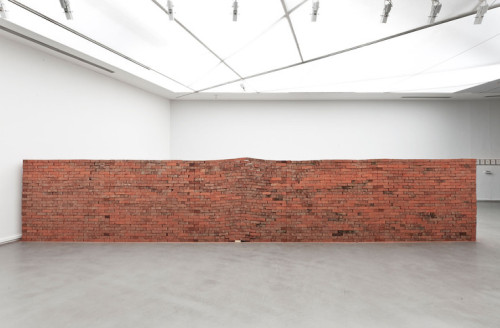


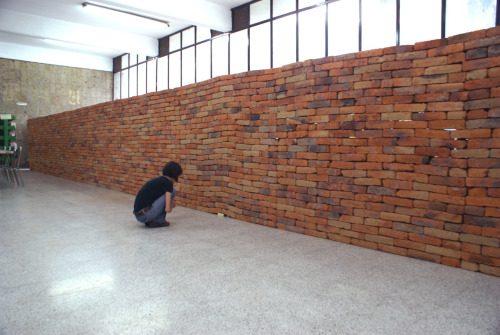
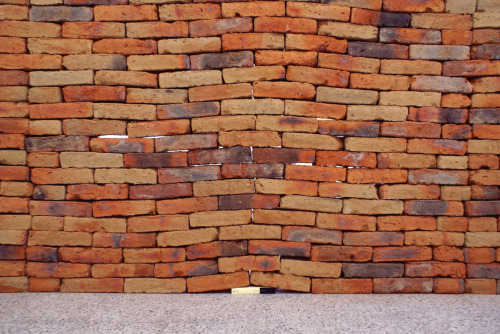
A Single Book Can Alter The Strongest Of Foundations
Installation artist Jorge Mendez Blake creates a powerful brick sculpture titled “The Castle”. The intimidating wall, formidable and erect, loses its symmetry and forms a rift at the point where a book it inserted at its root.
Keep reading
Oops
When humans “domesticated” fire 400,000 years ago they made the right combination of conditions – longer periods with close human contact, plus smoke-damaged lungs – for tuberculosis to mutate from a harmless soil bacterium into our number one bacterial killer, according to new research.
Also for ballroom! It’s fine for collegiate comps, but I’d love to compete at other ones as well
We, the undersigned, respectfully request that all event directors, clubs, and national organizations including, but not limited to, NASDE and the WSDC, eliminate gender discrimination in all local, national, and international West Coast Swing dance competitions and acknowledge points and placements awarded to competitors regardless of gender. Kelly Casanova, WSDC# 124
Please sign and share! Because everyone should be able to have their rightfully earned points count no matter what they choose to identify as. Also, fuck institutionalized heteronormativity.
learning to lead
you think you’re gonna be like

but really it’s like

hey man at least I can keep my feet while I’m turning a girl o-kay
I dance the Waltz to look refined. I dance Salsa to look exotic. I dance the Tango to look sexy. I dance Blues to look sexual. I dance West Coast Swing to look smooth. And I dance Lindy Hop so I can stop worrying what I look like and just have fun bouncing and swirling like a deranged yo-yo.
If This Isn’t From a Book, It Should Be (via gaircyrch)
I’d argue that Westie looks like what ever you want it to be (I dance it because I love how free I feel)
USADance (and I’m assuming the national organizations for other countries) still do this! The local chapters have to hold dances, and at least one of those a year has to be a formal: http://usadance.org/chapters/find-a-local-chapter/
You know what I wish we still had? Balls.
Like formal balls from fairytails. Instead of going to a club or a bar, you would go to a ballroom. There’d be music and dancing, and everyone could wear fancy clothes. There could be masquerades, where you could meet new people and reveal your real identity at the end of the night. There could be gay/lesbian balls and gothic balls and space fantasy balls. Just, formal balls.
I hear you! I’ve had three partners so far for competitions - it sucks when you don’t have anyone and I’m not entirely looking forward to having to find someone new when I graduate and move. There’s still a lot you can do on your own, though, I use a hoola hoop and mirrors to practice when I have to work on my own.
You can also find local ballroom groups for the US at: http://usadance.org/chapters/find-a-local-chapter/
The Sad Part about my love for ballroom dancing
Is I have no partner. No one to dance with, or take lessons with, so I am left alone, to dream. Here’s hoping for a little ballroom and a little romance when I move.
Most of that is the same in the US, though we have slightly different divisions, and more dances because of the Arthur Murray-standardized American Style. I’m just a collegiate Silver Standard dancer, though someone please correct me if I’m off, and I’ll barely mention Open.
Dance Styles: International Standard (Waltz, Tango, Foxtrot, Quickstep, Viennese Waltz), International Latin (Cha cha, Rumba, Samba, Jive, Paso Doble), American Smooth (Waltz, Tango, Foxtrot, Viennese), and American Rhythm (Cha cha, Rumba, Swing, Mambo, Bolero). The biggest difference between Standard and Smooth is that the couple can break frame in Smooth.
Divisions: There’s really two sets of divisions: Syllabus and Open. Syllabus divisions have specific figures they can do at their level, and go Newcomer, Bronze, Silver, Gold (or Newcomer, Beginner, Intermediate, and Advanced). Open has less restrictions on figures, essentially follows Syllabus once Gold starts to get boring, and goes Novice, Pre-Champ, Champ. USADance has also created Same-Sex divisions separated by gender of pairing and Open vs. Syllabus (these divisions would have Newcomer couples compete against Gold-level couples), but in collegiate competitions these couples are not separated out from the rest. For the most part the next division is achieved by points, but Newcomer at all competitions and Bronze at some collegiate competitions are also determined by time.
The number of dances you compete per style increases as you ascend levels as dances become paired, though some like Viennese Waltz and Paso Doble are typically separated out on their own. Same-Sex dances are currently not paired.
Costumes are pretty much the same, though there isn’t a standard for non-traditional dance roles. I’ve seen lady leaders do black tops and leotards with either pants or skirts, and male follows typically follow leader costume rules.
Ballroom
@carmodance for your anon and for other dance fans who knows nothing about ballroom
I saw a lot of people asking about ballroom, so I’ll try to explain few things (it’s gonna be long).
I’m from Russia and I didn’t compete last 4 years, so rules maybe slightly different. Also I probably forgot a lot of things. And my english isn’t the best.
Read it all under the cut
Keep reading
International tango is also the middle of a fight

“The forms of tango are like stages of a marriage. The American tango is like the beginning of a love affair, when you’re both very romantic and on your best behavior. The Argentine tango is when you’re in the heat of things and all kinds of emotions are flying: passion, anger, humor. The International tango is like the end of the marriage, when you’re staying together for the sake of the children.” -Barbara Garvey
Space Station Science: Biological Research

Each month, we highlight a different research topic on the International Space Station. In August, our focus is biological research. Learning how spaceflight affects living organisms will help us understand potential health risks related to humans on long duration missions, including our journey to Mars.

Cells, microbes, animals and plants are affected by microgravity, and studying the processes involved in adaptation to spaceflight increases our fundamental understanding of biological processes on Earth. Results on Earth from biological research in space include the development of new medications, improved agriculture, advancements in tissue engineering and regeneration, and more.
Take a look at a few of the biological research experiments performed on space station:
Biomolecule Sequencer

Living organisms contain DNA, and sequencing DNA is a powerful way to understand how they respond to changing environments. The Biomolecule Sequencer experiment hopes to demonstrate (for the first time) that DNA sequencing is feasible in an orbiting spacecraft. Why? A space-based DNA sequencer could identify microbes, diagnose diseases and understand crew member health, and potentially help detect DNA- based life elsewhere in the solar system.
Ant-stronauts

Yes, ant-stronauts…as in ants in space. These types of studies provide insights into how ants answer collective search problems. Watching how the colony adapts as a unit in the quest for resources in extreme environments, like space, provides data that can be used to build algorithms with varied applications. Understanding how ants search in different conditions could have applications for robotics.
TAGES

The TAGES experiment (Transgenic Arabidopsis Gene Expression System) looks to see how microgravity impacts the growth of plant roots. Fluorescent markers placed on the plant’s genes allow scientists to study root development of Arabidopsis (a cress plant) grown on the space station. Evidence shows that directional light in microgravity skews root growth to the right, rather than straight down from the light source. Root growth patters on station mimic that of plants grown at at 45% degree angle on Earth. Space flight appears to slow the rate of the plant’s early growth as well.
Heart Cells

Spaceflight can cause a suite of negative health effects, which become more problematic as crew members stay in orbit for long periods of time. Effects of Microgravity on Stem Cell-Derived Cardiomycytes (Heart Cells) studies the human heart, specifically how heart muscle tissue contracts, grows and changes in microgravity. Understanding how heart muscle cells change in space improves efforts for studying disease, screening drugs and conducting cell replacement therapy for future space missions.
Medaka Fish

Chew on these results…Jaw bones of Japanese Medaka fish in microgravity show decreased mineral density and increased volume of osteoclasts, cells that break down bone tissue. Results from this study improve our understanding of the mechanisms behind bone density and organ tissue changes in space.
These experiments, and many others, emphasize the importance of biological research on the space station. Understanding the potential health effects for crew members in microgravity will help us develop preventatives and countermeasures.
Make sure to follow us on Tumblr for your regular dose of space: http://nasa.tumblr.com
My question is, is the IDA going to be a standard for spacecraft? Do we have standard ports already?
Spacewalk Friday: Installing a New "Parking Spot" on Station
This Friday, Aug. 19, two U.S. astronauts will install a new gateway for American commercial crew spacecraft at the International Space Station.

Commercial crew flights from Florida’s Space Coast to the International Space Station will restore America’s human spaceflight launch capability and increase the time U.S. crews can dedicate to scientific research.

The adapter being installed (imaged below) was launched on a SpaceX Dragon cargo spacecraft and arrived on orbit July 20. This ring is known as an International Docking Adapter, or IDA, and its main purpose is to provide a port for spacecraft bringing astronauts to the station in the future. Outfitted with a host of sensors and systems, the adapter is built so spacecraft systems can automatically perform all the steps of arrival and docking with the station without input from the astronauts.
NASA astronauts Jeff Williams and Kate Rubins will perform the spacewalk to install the equipment this Friday, Aug. 19. This will be the fourth spacewalk in Williams’ career and the first for Rubins.

Four previous spacewalks…like the one below…helped set the stage for installation of this docking adapter. During those previous spacewalks, other crew members laid hundreds of feet of power and data cables outside the space station.

On Wednesday, the robotics team using the Canadarm2 and its attached “Dextre” manipulator, will reach into the SpaceX Dragon trunk and pull out the docking adapter and position it for Friday’s spacewalk activities.

The morning of the spacewalk, while the astronauts are getting suited up, the robotic arm will position the docking adaptor near the port so that it will be ready for installation.

The two astronauts will venture outside the space station to install the first International Docking Adapter (IDA). This new adapter port will provide a parking space for U.S. Commercial Crew vehicles.
Watch LIVE!
Coverage of the spacewalk begins at 6:30 a.m. EDT on Friday, Aug. 19; with the spacewalk scheduled to begin at 8:05 a.m. EDT. Stream live online HERE.
Make sure to follow us on Tumblr for your regular dose of space: http://nasa.tumblr.com
Getting to Mars: What It’ll Take
Join us as we take a closer look at the next steps in our journey to the Red Planet:
The journey to Mars crosses three thresholds, each with increasing challenges as humans move farther from Earth. We’re managing these challenges by developing and demonstrating capabilities in incremental steps:
Earth Reliant

Earth Reliant exploration is focused on research aboard the International Space Station. From this world-class microgravity laboratory, we are testing technologies and advancing human health and performance research that will enable deep space, long duration missions.
On the space station, we are advancing human health and behavioral research for Mars-class missions. We are pushing the state-of-the-art life support systems, printing 3-D parts and analyzing material handling techniques.
Proving Ground

In the Proving Ground, we will learn to conduct complex operations in a deep space environment that allows crews to return to Earth in a matter of days. Primarily operating in cislunar space (the volume of space around the moon). We will advance and validate the capabilities required for humans to live and work at distances much farther away from our home planet…such as at Mars.
Earth Independent

Earth Independent activities build on what we learn on the space station and in deep space to enable human missions to the Mars vicinity, possibly to low-Mars orbit or one of the Martian moons, and eventually the Martian surface. Future Mars missions will represent a collaborative effort between us and our partners.

Did you know….that through our robotic missions, we have already been on and around Mars for 40 years! Taking nearly every opportunity to send orbiters, landers and rovers with increasingly complex experiments and sensing systems. These orbiters and rovers have returned vital data about the Martian environment, helping us understand what challenges we may face and resources we may encounter.

Through the Asteroid Redirect Mission (ARM), we will demonstrate an advanced solar electric propulsion capability that will be a critical component of our journey to Mars. ARM will also provide an unprecedented opportunity for us to validate new spacewalk and sample handling techniques as astronauts investigate several tons of an asteroid boulder.
Living and working in space require accepting risks – and the journey to Mars is worth the risks. A new and powerful space transportation system is key to the journey, but we will also need to learn new ways of operating in space.
We Need You!

In the future, Mars will need all kinds of explorers, farmers, surveyors, teachers…but most of all YOU! As we overcome the challenges associated with traveling to deep space, we will still need the next generation of explorers to join us on this journey. Come with us on the journey to Mars as we explore with robots and send humans there one day.
Join us as we go behind-the-scenes:
We’re offering a behind-the-scenes look Thursday, Aug. 18 at our journey to Mars. Join us for the following events:
Journey to Mars Televised Event at 9:30 a.m. EDT Join in as we host a conversation about the numerous efforts enabling exploration of the Red Planet. Use #askNASA to ask your questions! Tune in HERE.
Facebook Live at 1:30 p.m. EDT Join in as we showcase the work and exhibits at our Michoud Assembly Facility. Participate HERE.
Hot Fire Test of an RS-25 Engine at 6 p.m. EDT The 7.5-minute test is part of a series of tests designed to put the upgraded former space shuttle engines through the rigorous temperature and pressure conditions they will experience during a launch. Watch HERE.
Make sure to follow us on Tumblr for your regular dose of space: http://nasa.tumblr.com

This is an art project I made in seventh grade, and to this day is the coolest thing I’ve ever made. It can be a wall decoration or a costume peice or whatever you want to do with it short of stopping an actual sword. If anybody is curious as to how one makes something like this, you need: - a big ass piece of cardboard - a big ass piece of foil - a shitload of Elmer’s liquid glue - a box cutter or super strong scissors - masking tape - a sponge - shoe polish - steel wool - a pencil and eraser if you like - (a straightedge and/or yardstick?) - (protractor?) Take the bigass piece of cardboard and draw your design in pencil. You’ll be raising lines or areas with the glue, so keep that in mind with your design. The raised will be the lighter parts. If you like, you can use a straightedge or something to make it look neater. Put a layer of glue over every line you want raised. Do the edges of every large area, but don’t fill it in yet. Let it dry, then repeat until you have a sizable bump. Fill in any raised areas you want with more glue (you will need a ton). Try to not let the glue run over the raised edges of the planes. It’ll take a while to dry after that. Once your design is glued to your satisfaction, let it dry. Trim the edges using the box cutter to get it to the shape you want. Then spread a layer of glue over the top of your project and carefully lay down the big ass piece of foil over the top. Be very careful not to wrinkle it too much, but spread it down as close to the surface as possible without ripping it. Fold the excess foil around the back and secure it with glue and masking tape. Take a sponge and shoe polish and apply liberally over the top of your project. Let it dry. Take the steel wool and rub the shoe polish off of the areas that are raised and supposed to be silver as opposed to black. Voila! A beautiful shield of your own design. Depending on how you want to use it, you can either attach a handle or something to the back or a method of hanging it from the wall. Enjoy!
